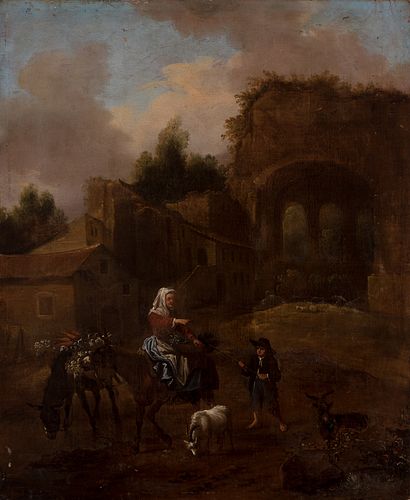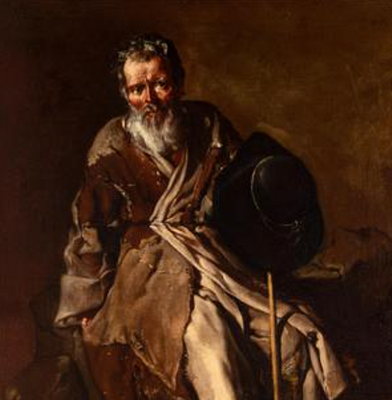Bamboccianti artist; century XVIII. “Ruined camp with pastoral scene”. Oil on canvas.
Lot 40
About Seller
Setdart Auction House
Carrer Aragó 346
Barcelona
Spain
Setdart Subastas was born in 2004 and is currently the first online art auction in Spain with solidity, prestige and reliability guaranteed by our more than 60,000 users. Setdart has a young, dynamic and enterprising team ready to successfully manage the purchase and sale of art works through custom...Read more
Estimate:
EUR€2,500 - EUR€3,000
$2,688.17 - $3,225.81
Absentee vs Live bid
Two ways to bid:
- Leave a max absentee bid and the platform will bid on your behalf up to your maximum bid during the live auction.
- Bid live during the auction and your bids will be submitted real-time to the auctioneer.
Bid Increments
| Price | Bid Increment |
|---|---|
| EUR€0 | EUR€10 |
| EUR€200 | EUR€25 |
| EUR€500 | EUR€50 |
| EUR€1,000 | EUR€100 |
| EUR€3,000 | EUR€200 |
| EUR€5,000 | EUR€500 |
| EUR€10,000 | EUR€1,000 |
| EUR€20,000 | EUR€2,000 |
| EUR€50,000 | EUR€5,000 |
About Auction
By Setdart Auction House
Jun 1, 2021
Set Reminder
2021-06-01 09:45:00
2021-06-01 09:45:00
America/New_York
Bidsquare
Bidsquare : OLD MASTERS & SCULPTURE - Day 2
https://www.bidsquare.com/auctions/setdart-auction-house/old-masters-sculpture---day-2-6999
Setdart Auction House sofia@setdart.com
Setdart Auction House sofia@setdart.com
- Lot Description
Bamboccianti artist; century XVIII. “Ruined camp with pastoral scene”. Oil on canvas. Measures: 76 x 62 cm. In this canvas the author shows us a landscape clearly inspired by the Dutch school with two characters, located in the center of the composition, accompanied by animals, so it can be deduced that they are peasants. The scene takes place in an exterior of golden light, in which several architectural constructions can be appreciated, among which the ruins located in the right zone of the work stand out. By the physiognomy of these, it is possible that the ruins respond to an apse of a church, which is deduced by its oval structure and its pointed openings, very typical of Gothic architecture. The author has conceived this work is following the costumbrista models, although he introduces a new and discordant element such as the appearance of the ruin, which becomes the protagonist of the image, although its presence may go unnoticed. However, it is the primary characteristic that indicates that the work is related to romantic painting, with which they tried to replace the large canvases of historical or religious themes, giving greater prominence to the landscape. They intended that the pure landscape, almost without figures or totally devoid of them, reach the heroic significance of history painting. They were based on the idea that human feeling and nature should be complementary, one reflected in the other. That is, the landscape should arouse emotion and transmit ideas. Thus, landscape painters like the author of this painting tried to express their feelings through the landscape, instead of imitating it. The romantic landscape had two main aspects: the dramatic, with turbulent and fantastic views, and the naturalistic, which emphasized images of a peaceful and serene nature. The Bamboccianti were genre painters, active in Rome from c. 1625 to the end of the 17th century. Most were Dutch and Flemish artists who brought to Italy the tradition of depicting costumbrist subjects, typical of 16th-century Dutch art. They generally created small cabinet works, or engravings of the daily life of the lower classes in Rome and its countryside. Despite their humble subject matter, the works found appreciation among elite collectors.
- Shipping Info
-
In-house shipping available. Please inquire at admin@setdart.com.
-
- Buyer's Premium



 EUR
EUR CAD
CAD AUD
AUD GBP
GBP MXN
MXN HKD
HKD CNY
CNY MYR
MYR SEK
SEK SGD
SGD CHF
CHF THB
THB
















